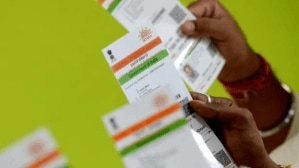India ranked 118 out of 147 countries in the latest World Happiness Report (WHR), improving its position from last year (126). Anvitii Rai explains why India ranks lags behind war-torn countries like Ukraine and Palestine, how the report conceptualises happiness, and the subjectivity in measuring it
What does the WHR 2025 say?
This year, the WHR emphasised on “the impact of caring and sharing on people’s happiness”. The report, published by the University of Oxford’s Wellbeing Research Centre on March 20 (United Nations’ World Happiness Day), analysed the effects of giving as well as receiving care on overall happiness. Other factors accounted for included benevolence and kindness as well as the impact and aftermath of Covid-19 on happiness. For example, researchers dropped wallets on the streets and analysed the rate of return, which was higher than expected in many nations and was viewed as a hugely optimistic factor. WHR 2025 saw Nordic countries maintaining their dominance. Finland retained the top spot for the eighth consecutive year, and within the top 10 spots four others (including the top four barring one) were occupied by these countries (Denmark, Iceland, Sweden, and Norway). Two Latin American nations, Costa Rica and Mexico, debuted in the top 10, taking the sixth and tenth spots respectively. The remaining spots were claimed by two European (Netherlands and Luxembourg) and one West Asian (Israel) nation(s). The happiest Asian nation is Taiwan, ranked 27.
How did economic superpowers fare in the rankings?
Notably, for the first time since the report was published in 2012, none of the large industrial powers (China, the US, Japan, Germany, and South Korea) figured in the top 20, as they ranked at 68, 24, 55, 22, and 58 respectively. Other industrial nations pushed out of the top 10 between 2013 and 2025 include Switzerland (3 in 2013, 1 in 2015, and 13 in 2025), Canada (6 in 2013 and 18 in 2025), and Australia (10 in 2013 and 11 in 2025). The report pointed out that in general, “the western industrial countries are now less happy than they were between 2005 and 2010”. It also observed that of the 42 nations that registered significant drops in the rankings, 15 were western industrialised countries, and three of them saw drops exceeding 0.5 on the 0-10 scale (the US, Switzerland, and Canada), placing them among the biggest losers.
How does the report measure happiness?
The Rankings are calculated on the basis of national natives’ self-evaluations of their lives. One question is given the most emphasis. The Gallup World Poll, according to the report, “asks respondents to evaluate their current life as a whole using the image of a ladder, with the best possible life for them as a 10 and the worst possible as a 0” (known as the Cantril ladder). The other two questions whose answers are factored in to tabulate the rankings include positive (laughter, enjoyment, and interest) and negative (worry, sadness, and anger) emotions experienced by respondents on the day before they took the survey. The WHR then uses six parameters — GDP per capita, healthy life expectancy, social support, freedom to make key life decisions, generosity, and perceptions of corruption in government and business — to explain these results.
Why India lags war-torn regions
India, at 118, outranks only Sri Lanka, Bangladesh, Myanmar, and Afghanistan within Asia, and is well behind Ukraine (111) and Palestine (108). India ranks 23rd for freedom, 51st for generosity, and 56th for perceptions of corruption, but fares much worse in terms of social support (128) and GDP per capita (93). This can be interpreted as the Indian population being relatively charitable and optimistic about personal freedoms, but feeling a dearth of support from people around them as well as the government, apart from lacking economic muscle.
Meanwhile, Ukraine lags India on freedom (128), but is ahead on social support and GDP per capita (both at 67), meaning that while the war-torn region experiences conflict, natives are close-knit and are not experiencing economic disparity. As mentioned above, while these factors do not influence the rankings, they can be used to understand social and personal perceptions on life within national populations.
How to interpret WHR findings
If one goes through the WHR’s ranking list, some apparent anomalies are visible. For example, several nations that are not considered prosperous — such as Mexico (which has high rates of violent crime), Kosovo (at risk due to civil unrest), Kazakhstan (ethnic conflicts), and Guatemala (suffering one of the highest murder rates in the Western hemisphere) — feature among the top 50.
More surprisingly, all of these outrank economic superpowers such as China, Japan, and South Korea. Thus, it should be kept in mind that the Cantril ladder is subjective. Natives of Kosovo, which has seen economic progress over the past decade, or Guatemala (regarded as a nation of faith and resilience) can possibly be more content with their circumstances than South Korea (where the top 1% earned 700%+ more than the average salaried worker) and Japan (where the younger population suffers from stress and anxiety due to a culture of overwork).








